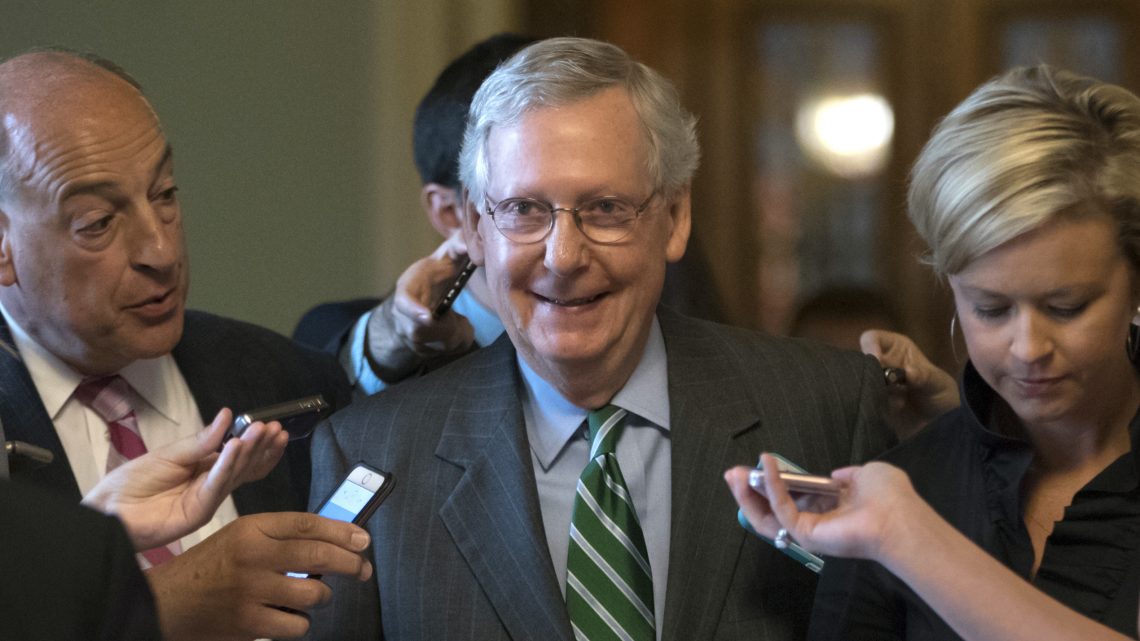
Breaking: Congress Continues to Do Pretty Much Nothing
July 5, 2018Last summer, after several Republican attempts at repealing and replacing the Affordable Care Act collapsed, a number of legislators and political wonks concluded that the only way forward for the nation’s rickety healthcare system was a bipartisan compromise bill. Around the same time, when President Donald Trump attempted to strip away DACA recipients legal protections, legislators and commentators likewise believed Congress would be able to find a bipartisan solution for those affected, and maybe even compromise on wider immigration reforms. And as 2018 began, many hoped that Congress might finally turn to infrastructure, a natural locus for bipartisan cooperation.
None of that has happened. The battle over the ACA has largely moved out of Congress entirely, into the courts. The Senate didn’t pass any of the four immigration bills it had under consideration, and more recently the House failed to pass a pair of bills written by Republicans. Congress has also pretty much abandoned infrastructure, a campaign issue for Trump in 2016 and a key talking point throughout 2017. This may lead some observers to wonder why there seem to be no bipartisan solutions whatsoever in Congress, even though many legislators and voters say they support at least the concept of such inter-party cooperation.
In truth, the 115th Congress actually is a paragon of bipartisan progress, at least going by raw historical data. In May 2017, an analysis of its legislative output showed that, since that January, it had introduced a higher ratio of bills with cross-party support than any Congress since the 2005-6 session. It has also passed more bipartisan bills than any Congress since 2007-8.
But that amounts to only a quarter of all bills introduced and 3.8 percent of all bills passed. Most of them address minor issues, noted Congress watcher Joshua Huder, like minor adjustments to regulations and “small tweaks to the tax code,” which don’t draw much national attention or debate. A few bills tackle larger issues, like the opioid crisis, that both sides agree need to be addressed and can find simple approaches for, like commissioning studies or funding existing programs. (Notably, have been no truly big or ambitious bills relating to opioids.)
A number of Democrats also recently joined almost every Republican to strip back restrictions imposed on banks in 2010 to stave off another financial collapse. “There are several Democrats who come from areas with large financial sectors: New York, Connecticut, Delaware, New Jersey, California,” explained Huder. Though many Democrats, especially Massachusetts Senator Elizabeth Warren, are aggressively opposed to banking deregulation, a lack of party unity on these matters makes it easy for some Democrats to break ranks and vote with the bulk of the GOP, which is generally dedicated to deregulation.
But though many on the left are outraged by that move, regulating the financial sector hasn’t taken the spotlight in the same way healthcare or immigration have. “High-profile issues,” said Huder, “are more difficult” for the parties to collaborate on.
The two parties naturally have different views on big-ticket items. But especially since the Obama era, rising political polarization has widened the ideological gap and hardened many legislators’ devotion to their party’s preferred approaches.
In theory, the need to get things done should push members of both parties to compromise and then stress their victories, while downplaying concessions, to attract ideological voters while at the same time appealing to moderates’ love of pragmatic solutions. But Michael Barone of the conservative-leaning American Enterprise Institute told me over the past couple decades national elections have grown closer, which hurts this dynamic. “This means,” he told me, “that both parties can reasonably anticipate being in what they deem to be control—White House plus majorities in the Senate and House.” Why compromise when unilateral control over the government is a single swing election away?
Changes in how bills are brought to the floor of the House and Senate have altered the partisan dynamic as well. As Congress scholar John Johannes pointed out, House Republican leaders routinely shoot down votes on any bill that does not have almost unanimous party support, meaning the extremely ideological wings of the GOP can in practice block almost any major compromise legislation.Both House and Senate Republican leaders also now promote bringing fully formed bills to the floor on major issues to bypass the committee and amendment processes, which in theory would foster compromise. (It doesn’t help that the Republicans in control of the House in 2011 banned earmarking, an age-old practice of attaching funds for pet projects to bills to make it easier for legislators to swallow concessions and show gains to their constituents.) Leadership has also put new emphasis on “reconciliation,” a tool that allows them to pass bills that impact the budget with a simple majority vote—that's how the GOP passed its sweeping tax cut bill late last year without any input at all from Democrats.
This procedural wall against bipartisanship on major partisan issues is so bad that it’s led some, including Ohio governor and former Republican presidential hopeful John Kasich to try to convince legislators to use an obscure legislative tool to force legislation past leadership blocks.
Unfortunately, noted Huder, there is enough diversity of thought within both parties that they can rarely reach agreement even among themselves on how to tackle major issues. That’s why, even with control of the White House and Congress, Republicans failed to pass a healthcare bill in 2017.
“All of the dysfunction” we see around bipartisan action on major issues, Huder argued, “in some ways boils down to the inability of the parties to work together.” But, he added, “the question is not whether” members of both parties can collaborate, “but whether they want to in many cases.”
Republican leaders have even less incentive than usual to pursue compromise, said Johannes, because Trump provides little clarity about what concessions he’s willing to tolerate. There is no reason for Mitch McConnell or Paul Ryan to go out on a limb for a bipartisan proposal when they have no idea if Trump might be ready to saw off that limb. (This week, Trump claimed he never asked House Republicans to vote for a “compromise” immigration bill, days after tweeting a request for them to pass the bill.)
Election years multiply the strength of anti-collaborative forces. Legislators looking to defend their seats have to appeal to the hyper-partisan voters who come out in primaries by stressing their hardline credentials, not making concessions. Defending seats just sucks up a ton of legislative bandwidth, too. “Other than the appropriations bills and judgeships,” said political scientist Ross Baker, “I don’t see a lot getting done” in the remainder of 2018.
Legislators can, for instance, propose plans to stabilize healthcare costs by patching the ACA’s individual marketplaces while making it easier for states to implement conservative tweaks to the ACA—that's the sort of compromise that makes a certain amount of sense and would resolve many pressing healthcare concerns for a few years at least. But it isn’t a big enough GOP win, much less a pure conservative idea, so there’s no chance of such a bill even being brought up for a vote.
Similarly, some Democrats and Republicans can collaborate on the narrow and widely popular goal of extending protections for DACA recipients in exchange for boosting border security funding. But Trump and House conservatives have hardened around demands for more severe anti-immigration concessions, like border wall funding and cuts to legal immigration, so that avenue for cooperation has been closed off as well.
A critical mass of Democrats and Republicans could likely agree on a mix of projects they could sell to their constituents in a grand bipartisan infrastructure bill, said Randal O’Toole of the libertarian-leaning Cato Institute. But fiscal conservatives would hate the spending that would entail, and that Republican opposition would keep it off the floor. A narrower, no-cost effort to retool cumbersome permitting processes for infrastructure projects might be able to overcome such fiscal concerns, noted O’Toole. But as Baker pointed out, voters might not see much of value in such a bill. So not even that is worth the stain of collaboration and concession in an election year.
These anti-bipartisan variables are unlikely to change anytime in the near future. As long as the margins in Congress remain slim, Johannes noted, and especially if only one chamber flips Democratic this November, we can’t expect much action, inter-party or otherwise, on pressing issues. That is depressing, and will do little to help rapidly eroding public faith in Congress.
Our only hope for meaningful bipartisan action, and thus movement on major national concerns, then, may be by shaking up Congress, which has not undergone structural reforms since 1992. Jason Grumet, the head of the Bipartisan Policy Center, suggested allowing committees to deliberate in private so cooperative deals can’t be killed early by national partisan outrage. Earmarks could make a return, with some restrictions, to grease dealmaking. Party leaders could be forced to allow bills that clear committee to go the floor, open to unrestricted amendments and an up-or-down vote. And members of Congress could take mandatory joint trips together to gain understanding of issues they’re voting on, and see each other’s perspectives.
But both parties would have to agree to undertake those reforms—and the chances of them coming together on anything so important seems increasingly unlikely.
Sign up for our newsletter to get the best of VICE delivered to your inbox daily.
Follow Mark Hay on Twitter.


